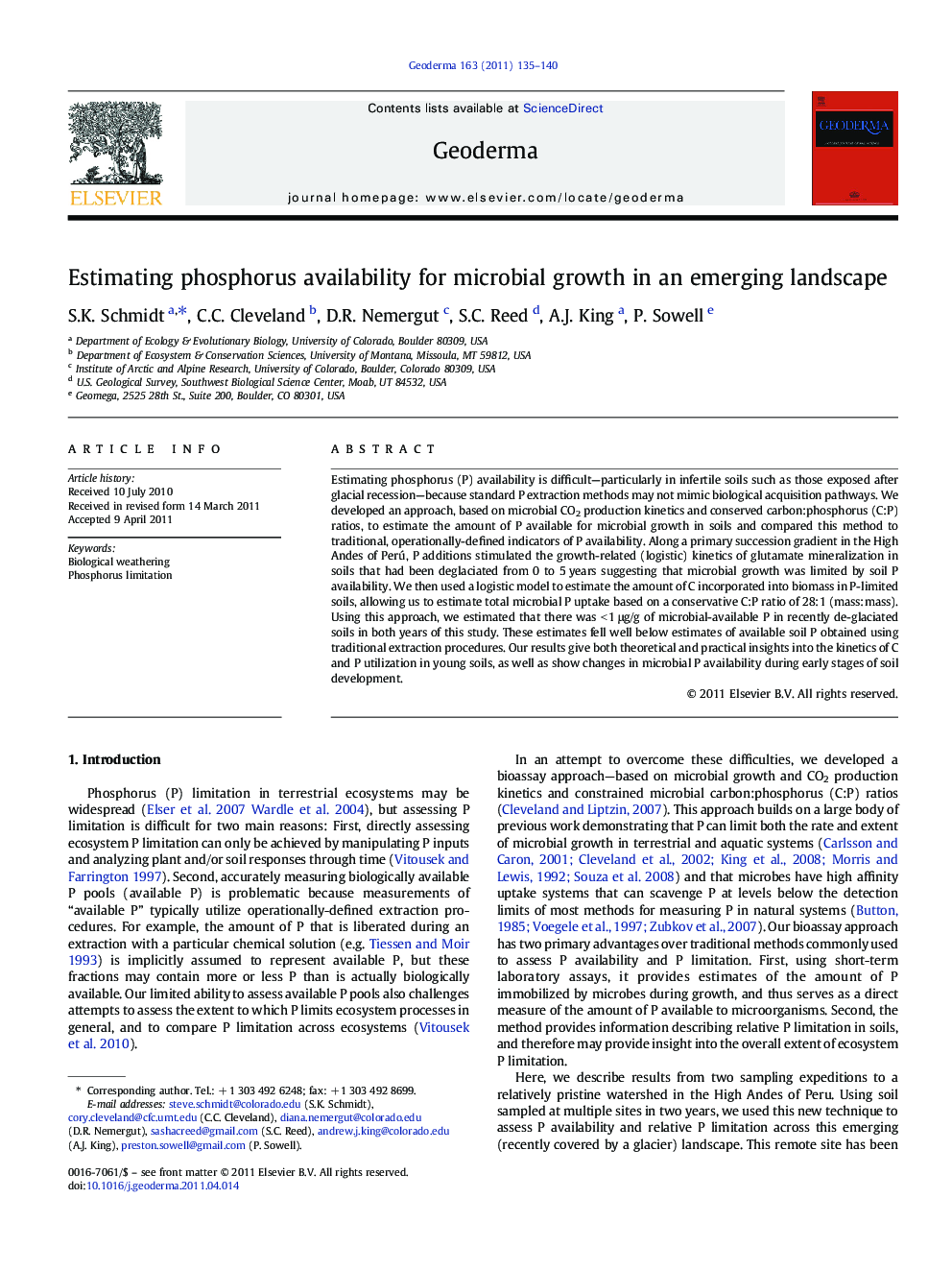| Article ID | Journal | Published Year | Pages | File Type |
|---|---|---|---|---|
| 4574204 | Geoderma | 2011 | 6 Pages |
Estimating phosphorus (P) availability is difficult—particularly in infertile soils such as those exposed after glacial recession—because standard P extraction methods may not mimic biological acquisition pathways. We developed an approach, based on microbial CO2 production kinetics and conserved carbon:phosphorus (C:P) ratios, to estimate the amount of P available for microbial growth in soils and compared this method to traditional, operationally-defined indicators of P availability. Along a primary succession gradient in the High Andes of Perú, P additions stimulated the growth-related (logistic) kinetics of glutamate mineralization in soils that had been deglaciated from 0 to 5 years suggesting that microbial growth was limited by soil P availability. We then used a logistic model to estimate the amount of C incorporated into biomass in P-limited soils, allowing us to estimate total microbial P uptake based on a conservative C:P ratio of 28:1 (mass:mass). Using this approach, we estimated that there was < 1 μg/g of microbial-available P in recently de-glaciated soils in both years of this study. These estimates fell well below estimates of available soil P obtained using traditional extraction procedures. Our results give both theoretical and practical insights into the kinetics of C and P utilization in young soils, as well as show changes in microbial P availability during early stages of soil development.
Research highlights► We developed a bioassay to estimate microbial available phosphorus in soils. ► Phosphorus is limiting to growth of heterotrophic microbes in recently de-glaciated soils. ► Phosphorus availability is lower than that measured by standard soil extraction approaches. ► Available phosphorus levels are about 0.8 μg/g of soil (or 0.8 ppm) in newly de-glaciated soils and increase as soils weather and age.
